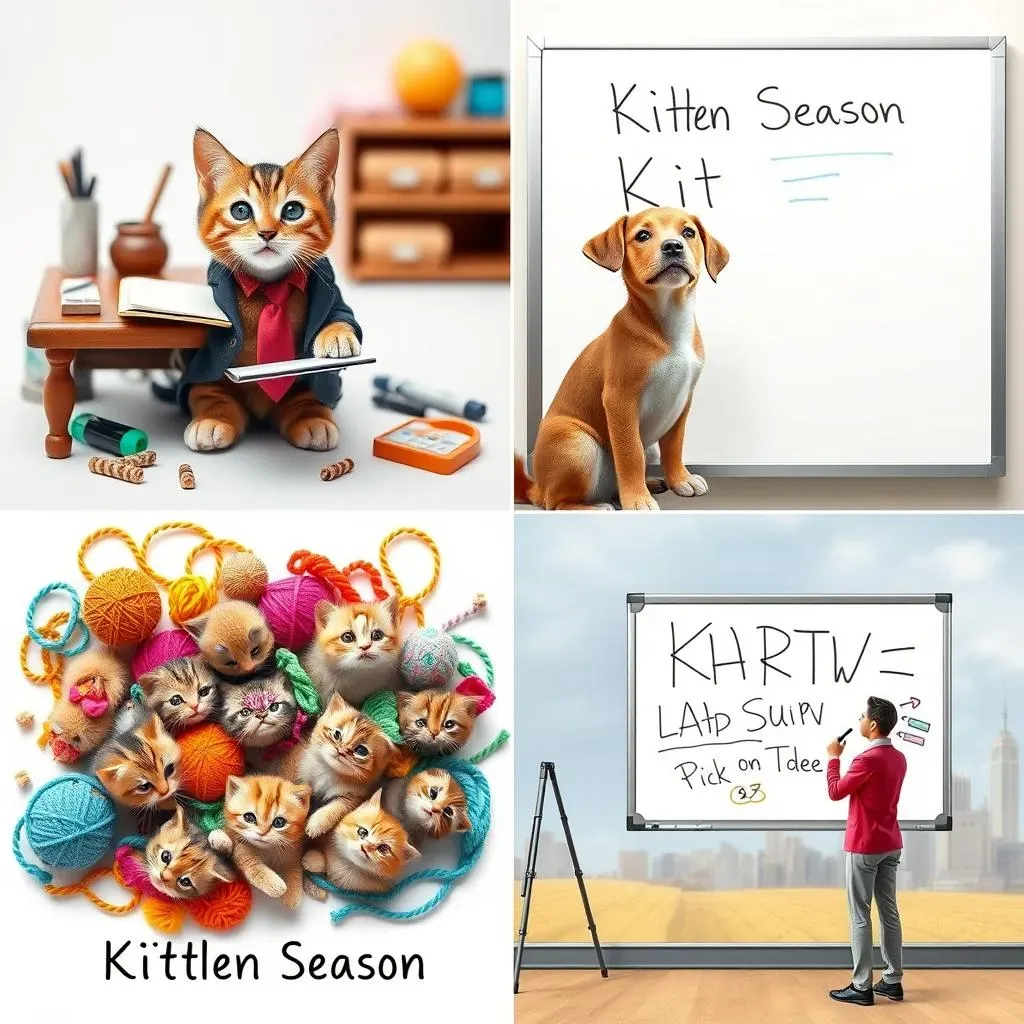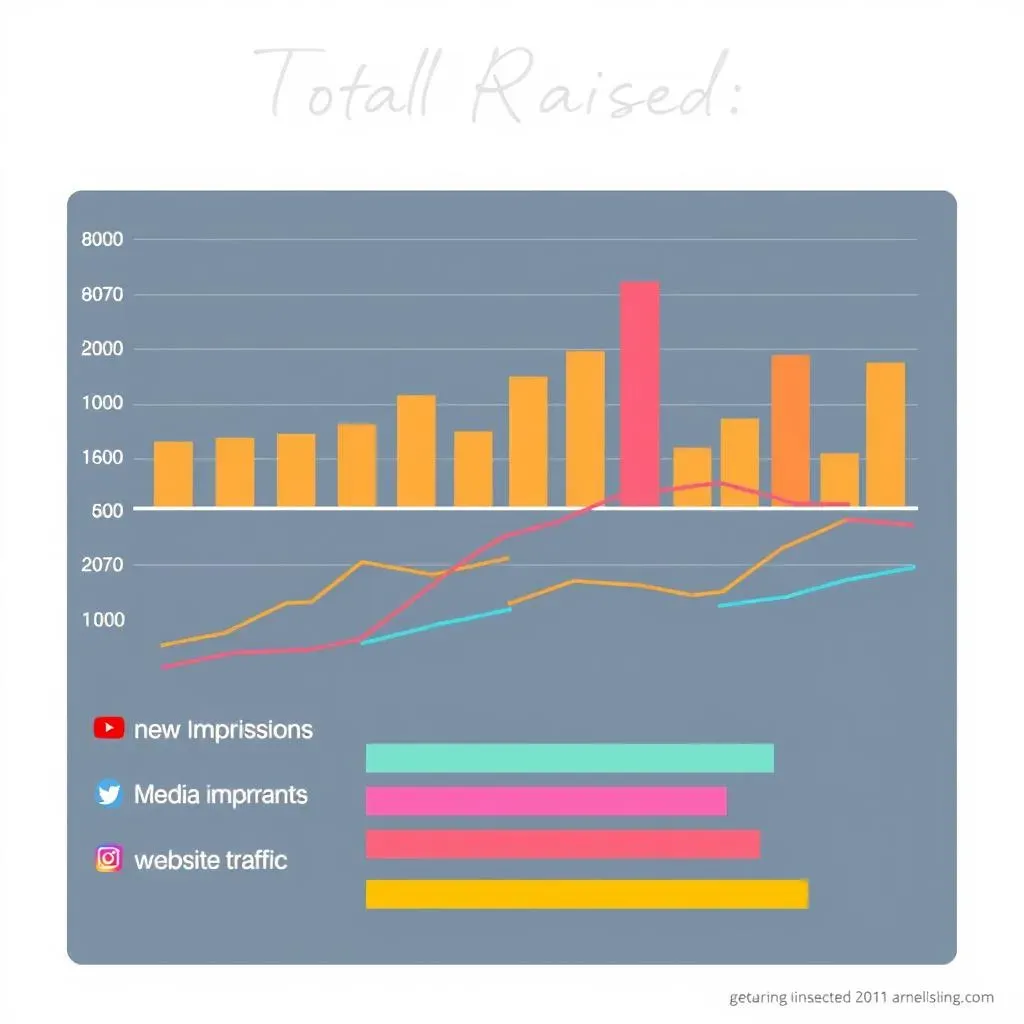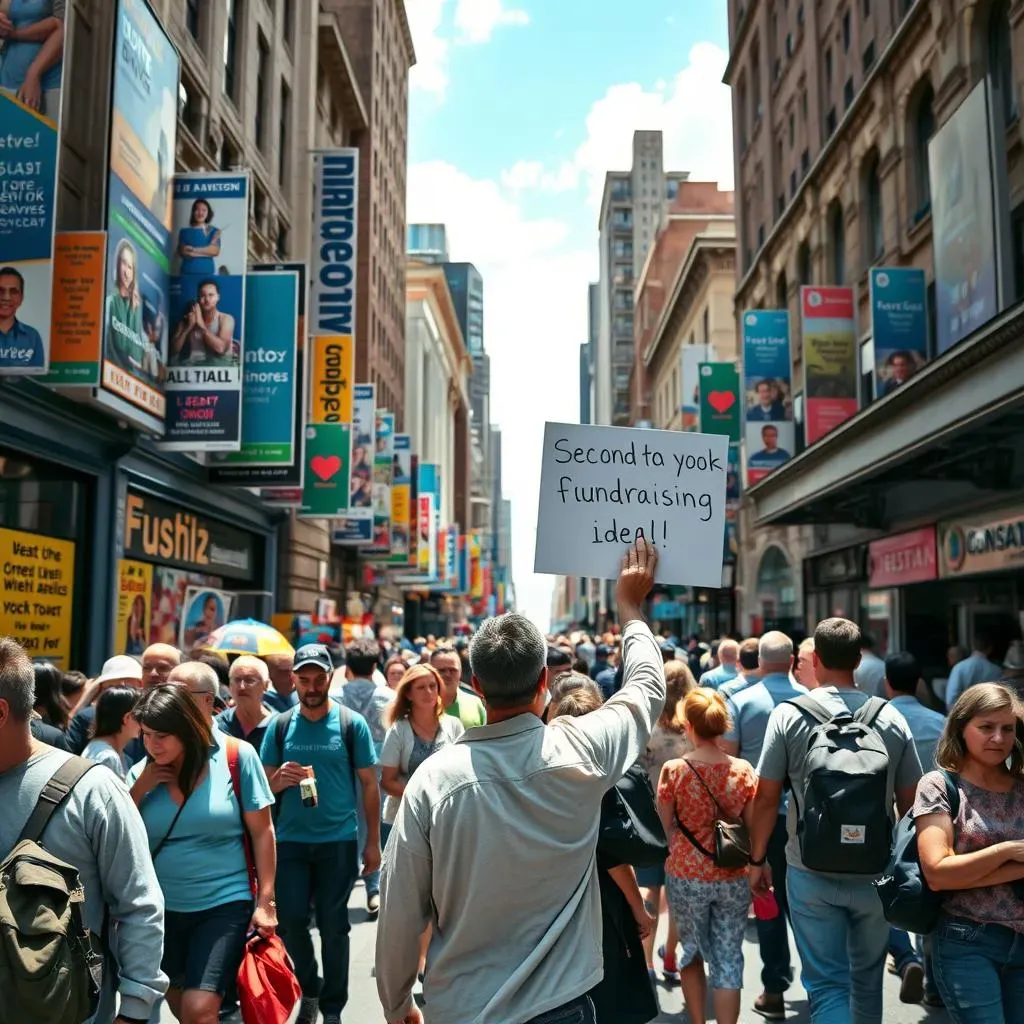Table of Contents
Let's be honest. Another bake sale? A car wash on a Saturday morning? If the thought makes you yawn louder than a sloth convention, you're not alone. The fundraising landscape is cluttered, and standing out requires more than just enthusiasm; it demands creativity. Relying on the same tired tactics rarely cuts through the noise or inspires genuine generosity these days.
Why Original Fundraising Ideas Matter Now

Why Original Fundraising Ideas Matter Now
The Donor Fatigue Problem is Real
Look, people are bombarded with requests for money. Every day. From every direction. Your inbox is full, your mailbox is full, your social feed is full. Asking for a donation, even for a worthy cause, often feels like just another ask in a relentless stream. When you trot out the same old bake sale or raffle, it doesn't just feel tired; it feels like you're not even trying to make it interesting for the people you're asking to help. That's where donor fatigue sets in. People tune out. Your message gets lost in the noise, and your fundraising efforts sputter instead of soar. This is precisely why original fundraising ideas aren't just a nice-to-have, they're a necessity.
Originality Cuts Through the Clutter
In a world drowning in content and competing priorities, being forgettable is the kiss of death for your fundraising efforts. An original idea isn't just novel; it's a story. It gives people something to talk about, something to share, something that sticks in their brain longer than the memory of that slightly-too-dry brownie from the last bake sale. When you do something different, something unexpected, you grab attention. You create buzz. You make people curious, and curiosity is a powerful motivator. It makes them stop scrolling, pay attention, and actually *engage* with what you're doing.
What makes an idea cut through?
- Unexpected format or location
- Involves participation beyond just donating
- Connects directly to the cause in a tangible way
- Generates genuine excitement or conversation
Attracting New Eyes and Enthusiasm
The tried-and-true methods usually tap into your existing network. Your friends, family, and current supporters. That's fine, but how do you bring *new* people into the fold? Original fundraising ideas are magnets for fresh audiences. They can attract media attention because they're news-worthy. They can go viral on social media because they're shareable and interesting. They can pique the interest of people who might never have considered supporting your cause before, simply because the event or activity itself is appealing. That expanded reach isn't just about one event; it's about building your supporter base for the long haul. This demonstrates why original fundraising ideas matter now more than ever.
Generating Truly Original Fundraising Ideas: Beyond the Usual Suspects

Generating Truly Original Fundraising Ideas: Beyond the Usual Suspects
Forget the Brainstorming Pizza Party
so you know you need something different. But how do you actually *get* original? It doesn't just magically appear after staring blankly at a whiteboard. Stop thinking about "fundraising" for a second. Think about your cause. What problem are you solving? Who are you helping? What are the emotions involved? Get granular. If you're supporting animal shelters, don't just think "animal event." Think about the absurdity of cats running a tiny business, or the silent plea in a dog's eyes, or the sheer chaos of kitten season. Originality often comes from digging into the core of *why* you exist and finding a unique angle that hasn't been exploited ad nauseam. It requires stepping outside the non-profit bubble and looking at what captures attention elsewhere – art, entertainment, even bizarre internet trends.
What's the real pain point you address?
- Lack of access to resources
- Environmental degradation
- Social injustice
- Lack of education
Steal Like an Artist (But for Fundraising)
Nobody creates in a vacuum. Look at other industries. How do brands launch new products? How do artists promote their work? How do communities come together for non-fundraising events? There are mechanics there you can borrow and twist for your own purposes. Maybe it's a gamified challenge like a fitness app, a subscription model like a streaming service, or an immersive experience like an escape room. The key is to take something familiar from another context and apply it to your cause in an unexpected way. This is where generating truly original fundraising ideas starts to feel less daunting and more like creative problem-solving.
The "Why Not?" Filter and the Reality Check
Once you have a few wild ideas brewing, run them through two filters. First, the "Why Not?" filter: Push the boundaries. Ask if it's truly different. If it sounds vaguely like something you've seen before, scrap it or push it further. Second, the reality check: Can you actually *do* this? Do you have the resources, the volunteers, the legal clearance, the audience? A brilliant idea that's impossible to execute is just a daydream. Find the sweet spot between innovative and achievable. Test the concept on a small group. Get feedback. Refine it. Don't fall so in love with your original fundraising idea that you ignore glaring logistical nightmares.
Showcase of Winning Original Fundraising Ideas

Showcase of Winning Original Fundraising Ideas
Immersive Experiences That Stick
Forget the rubber chicken circuit. Some of the most effective original fundraising ideas drop donors right into an experience they won't forget. Think about an "Escape Room for a Cause," where teams pay to solve puzzles tied to facts or challenges related to your mission. Or perhaps a "Dinner in the Dark," giving guests a sensory-heightening meal prepared by a local chef, with proceeds supporting programs for the visually impaired. These aren't just events; they're curated moments that make the cause tangible. People aren't just writing a check; they're talking about that time they fumbled for their fork in the dark or finally cracked the code to "escape" poverty or illiteracy in a simulated scenario. It’s fundraising through doing, not just giving.
Challenges That Push Boundaries (and Donations)
People love a challenge, especially when it's for a good reason. We're not talking about your standard fun run here. Consider something truly different, like a "Build-a-Boat Challenge" where teams construct and race makeshift vessels, raising funds through sponsorships and entry fees. Or maybe a "Coding for a Cause" hackathon, where tech enthusiasts build solutions for community problems over a weekend, attracting corporate sponsors and participant fees. These ideas leverage skills, competition, and physical or mental effort. They turn passive donors into active participants and peer-to-peer fundraisers, expanding your reach organically. Successful original fundraising ideas often tap into existing passions and turn them into philanthropic powerhouses.
What makes these ideas resonate?
- They offer a unique experience.
- They directly involve participants.
- They create memorable stories.
- They often connect to the cause in a creative way.
Executing Your Original Fundraising Idea Without a Hitch

Executing Your Original Fundraising Idea Without a Hitch
Executing Your Original Fundraising Idea Without a Hitch
you've brainstormed some killer, truly original fundraising ideas. You're buzzing. Now comes the part where rubber meets the road – execution. This is where brilliant concepts can crash and burn if you don't get the details right. It's not enough to have a cool concept; you need a battle plan. Think military precision, but with less yelling and more coffee. Map out every single step from idea to wrap-up. Who is doing what? When does it need to happen? What's the budget, and more importantly, what's the contingency plan when something inevitably goes sideways? Because trust me, something always goes sideways. Don't just hope for the best; plan for the worst, especially when you're trying something new and untested. This meticulous planning is the foundation for Executing Your Original Fundraising Idea Without a Hitch.
Measuring Impact: Did Your Original Fundraising Idea Hit the Mark?

Measuring Impact: Did Your Original Fundraising Idea Hit the Mark?
Beyond the Bottom Line: What Success Really Looks Like
the event is over. The last volunteer has gone home, and you're staring at a spreadsheet. The most obvious metric for an original fundraising idea is, of course, the cold, hard cash raised. Did you hit your financial goal? Great. But that's just one piece of the puzzle. True impact goes deeper. Did you attract new donors? Did you get media coverage? Did people talk about your event for days afterward? Did it genuinely educate people about your cause in a way a standard appeal never could? Measuring Impact: Did Your Original Fundraising Idea Hit the Mark? isn't just about the dollars; it's about reach, engagement, and how well you moved the needle on awareness and future support. If you just broke even but gained 100 new, engaged potential donors, that's arguably a win.
The Numbers Game: Tracking What Matters
You can't manage what you don't measure. This isn't groundbreaking advice, but it's shocking how many organizations skip this step after a successful event. You need to track everything. How many people attended or participated? Where did they hear about it? How many were first-time donors or contacts? Did you get any media mentions, and what was the reach of that coverage? Monitor social media buzz – mentions, shares, sentiment. Track volunteer hours contributed specifically to this event. Compare these numbers not just to your financial goal, but to goals for engagement and awareness you set beforehand. If you didn't set those goals, well, lesson learned for next time. This is the data that tells you if your original fundraising ideas are hitting home.
- Total funds raised (gross and net)
- Number of attendees/participants
- Number of new donors/contacts
- Media impressions (online, print, broadcast)
- Social media engagement (likes, shares, comments, mentions)
- Website traffic increase during the campaign/event
- Volunteer hours dedicated
- Feedback collected from participants/donors
Analyzing the Data and Learning for Next Time
Gathering the data is only half the battle. The real work is sitting down, coffee in hand, and dissecting what happened. What worked brilliantly? What fell flat? Was the "Escape Room for a Cause" concept engaging, but the ticket price too high? Did the "Coding for a Cause" hackathon attract techies but fail to educate them about the actual impact of their work? Look at the conversion rates – how many attendees became donors? How many social shares translated into clicks or sign-ups? Be honest in your assessment. This isn't about blame; it's about refining your process for future original fundraising ideas. Use these insights to tweak the concept if you run it again, or inform your brainstorming for the *next* wild idea you cook up. Because if you're not learning, you're just repeating the same mistakes, no matter how "original" the wrapper looks.
The Reality of Raising Funds
So, you've considered the landscape, maybe even brainstormed a few concepts that don't involve selling cookies door-to-door. The truth is, coming up with and executing original fundraising ideas takes more effort than recycling a worn-out event. It requires planning, courage to try something new, and the willingness to accept that not every idea will be a runaway success. But in a world saturated with asks, being original isn't just a nice-to-have; it's often the only way to capture attention and unlock genuine support. The payoff for hitting on a truly engaging concept can be significant, but don't mistake originality for a magic wand. It's a tool, and like any tool, its effectiveness depends on how you wield it.
